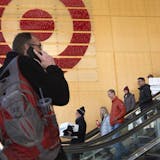The mood was bleak on Wednesday morning at the Camp Nenookaasi homeless encampment in south Minneapolis. Scraps of police tape were still tied to tent poles while people sat dumbstruck around the camp's prayer fire. The night before, a man everyone knew as T-Bone had been shot dead in a tent.
The city had announced plans to close the encampment, though the date keeps changing. There was a sense that the killing of Tyrone J. Mohr, 45, made it that much more difficult to argue for a reprieve.
Founded this summer on a plot of long-vacant city property at E. 23rd Street and 13th Ave. S., Nenookaasi (meaning hummingbird in Ojibwe) has become the city's largest homeless village. It supported roughly 180 occupants at its height.
Nenookaasi is an experiment in whether the dedicated management of an unsanctioned encampment could forestall neighbors' ire long enough for the people sheltering within — many with deep mental health needs — to build trust with outreach workers.
But the volunteers are few, the government resources hard-fought and scarce. While agencies have steered dozens of the camp's residents into housing and treatment, some return after relapsing.
Fed up with the mountains of trash that the camp produces with nowhere else to store it but the boulevard , neighbors including the Indian Health Board and Metropolitan Urban Indian Directors are urging the city to clear it.
The Indigenous Peoples Task Force, a Native organization that supports people living with HIV, wants to purchase the land for a $12 million community center. They hope to close the deal in February and start building before delays drive up borrowing and construction costs, said executive director Sharon Day. The city has promised to sell the land for a dollar and invest $1 million in COVID relief money.
"We've been planning this for years," said Day. "We've got to start or it'll never happen."



